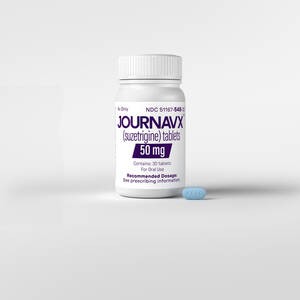PainRelief.com Interview with:
Aleksandra E. Zgierska, MD, PhD
Jeanne L. and Thomas L. Leaman, MD, Endowed Professor and Vice Chair for Research
Department of Family and Community Medicine
Professor, Department of Public Health Sciences
Professor, Department of Anesthesiology and Perioperative Medicine
Penn State College of Medicine, Hershey, Pennsylvania
PainRelief.com: What is the background for this study?
Response: This research began about 15 years ago, grounded in my clinical work as a family physician and addiction medicine specialist. While many patients were referred for the treatment of opioid use disorder, a growing number were adults with chronic pain treated with long-term opioids—patients who didn’t quite fit into existing systems. They weren’t appropriate for addiction treatment, yet often felt unwelcome in primary care or pain clinics. Most had tried multiple medications, procedures, and physical therapy, often with limited relief. What stood out was how few had received evidence-based psychological treatments for chronic pain, despite also struggling with mental health challenges and maladaptive coping.
I became interested in identifying safe, long-term strategies to help these patients manage pain and improve their quality of life. Medications or procedures often have limited, short-term benefits and can cause side effects. Many patients were hesitant to try physical therapy again, especially given their pain levels and fear of worsening symptoms. This led me to explore psychological approaches—particularly mindfulness, which, unlike cognitive behavioral therapy or CBT (already considered a standard but underused approach), had untapped potential for addressing pain, mental health, and overall well-being.
Our team launched a pilot study comparing mindfulness-based therapy plus usual care to usual care alone for adults with opioid-treated chronic low back pain—the most common non-cancer pain treated with opioids. The results were promising and led to a large, multisite clinical trial funded by Patient-Centered Outcomes Research Institute (PCORI). In this trial, we compared mindfulness to CBT, in partnership with expert teams across the country led by Dr. Bruce Barrett (University of Wisconsin-Madison), Dr. Robert Edwards (Brigham and Women’s Hospital), and Dr. Eric Garland (University of Utah), and coordinated by the study manager, Cindy Burzinski. We hypothesized that mindfulness would outperform CBT in improving pain, function, quality of life, and reducing opioid use.
A unique strength of our study was the meaningful involvement of stakeholders throughout the entire project. From the initial planning phase—before our proposal was even submitted to PCORI—we partnered with individuals representing the perspectives of patients, caregivers, clinicians (including physicians, mental health providers, and physical therapists), and advocacy organizations. These stakeholder advisory groups met with us regularly throughout the study to provide input on how to make the project more relevant to real-world clinical settings and more user-friendly for both patients and providers. They also played a key role in interpreting the results. Their insights enriched every phase of the project and ensured that our research stayed grounded in patient-centered priorities. We were proud to formally acknowledge our partners’ contributions in the paper; two of them, Penney Cowan and Christin Veasley, are founders of prominent patient advocacy organizations and directly co-authored the article. We believe this type of collaboration should become standard practice in clinical research. It’s a powerful way to bridge the gap between research and real-world implementation.









